
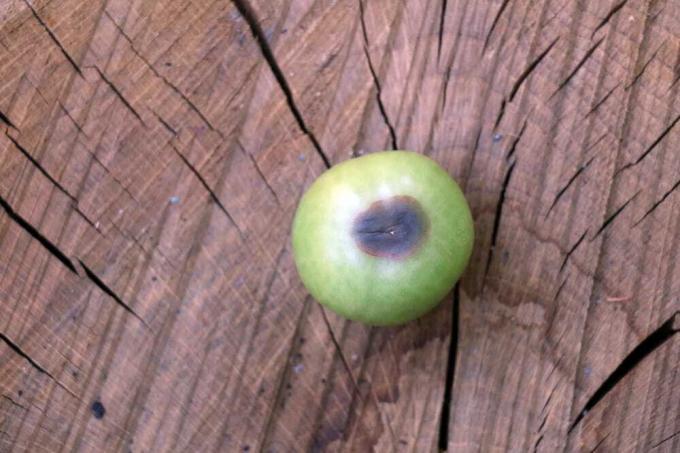
Table of contents
- damage picture
- causes
- Combat & Prevent
- fertilizer
- edibility
- Conclusion
If the tomatoes show brown discoloration in the area where the blossoms begin, blossom end rot is often the culprit. This is not an infestation with pests or fungi, but a disease that damages the metabolism of the tomatoes. So far, the causes of blossom end rot have not been researched and fully clarified, but there are good results in treating the disease. The results achieved so far at least point to certain solutions for effective prevention.
damage picture
In the case of the tomato fruits, watery spots appear first at the points at which the blossom begins and then turn dark. The inflorescences are at the bottom of the fruit, just opposite the stem base. But the leaves can also be affected by blossom end rot, which is shown by malformed shoot tips. The regrowing leaves cannot develop properly and die off quickly. However, not every tomato variety reacts in the same way to the disease, so the appearance can vary significantly.
- Grey-green to dark brown spots
- Gradually, the spots in the tissue enlarge
- Finally, the tissue sinks in completely and hardens
- In rare cases, malformations appear at the tips of the shoots
- Young leaves are severely deformed and grow poorly
causes
When the first signs of blossom end rot appear, improper watering may be to blame. Even if the tomato plants receive too few nutrients, they are more susceptible to the metabolic disease. In addition, the pH value and the concentration of nutrient salts in the soil play an important role, including above all ammonium, potassium, magnesium and sodium. The calcium supply is also an important factor, causing acidic soils that are permanently too dry Deficiencies, since calcium is mainly absorbed through the irrigation water and in this way into the fruit can reach.
- Strong fluctuations in the casting units are often a cause
- Inadequate nutrient supply
- Too acidic soils support the course of the disease
- Blossom end rot is more common in greenhouse tomatoes
- Strong and lush growing tomato varieties are particularly at risk
Combat & Prevent
Tomato plants need regular but not excessive watering. The watering units are extremely important, especially during long periods of drought, in order not to unnecessarily weaken the plant's immune system. Furthermore, fertilizers are an important factor in maintaining health, as is the level of nutrient salts. In order to initiate the right preventive measures, soil investigations are advisable, as they can provide precise information about the facts. You can easily determine the pH of the soil yourself; a set for the test is available from specialist retailers. This can also be used without chemical knowledge, thanks to the coloring reaction, the gardener is shown how high the lime content of the soil is.
- Soil must be neither too dry nor too wet
- Uniform moistening of the soil is optimal
- Ensure a balanced supply of nutrients
- Avoid oversupply with nutrient salts such as magnesium and potassium
- Check the pH of the soil regularly
- The ideal soil pH is 6.5
- Neutralize soils that are too acidic by adding lime
- Alternatively, work rock flour into the soil
Tip:
If problems with blossom end rot or other diseases occur repeatedly, then a detailed soil analysis by a specialist laboratory is recommended. This can be carried out, for example, with the help of the LUFA (Agricultural Analysis and Research Institute), if desired also with appropriate fertilizer recommendations.
fertilizer
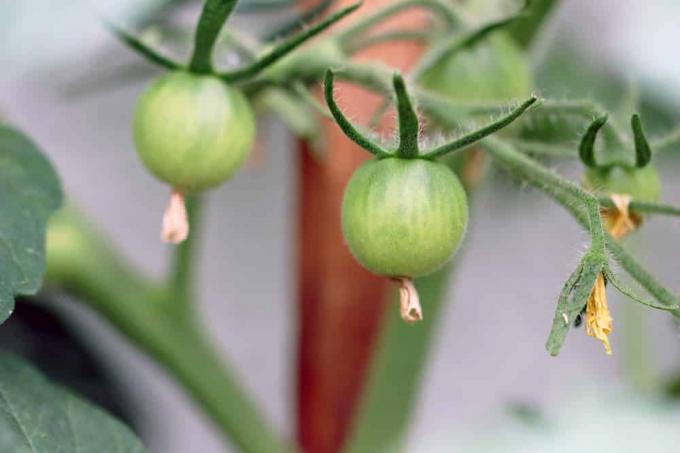
If the tomato plants receive too few nutrients, they are particularly susceptible to blossom end rot. In this case, regular fertilization is called for, but in the right amount to avoid under- or oversupply. Over-fertilization of the soil with a fertilizer that contains too much nitrogen is also one of the possible causes of the disease. There are special fertilizers in specialist shops that are tailored to the special needs of tomatoes. If the first symptoms appear on the fruits, then an effective calcium fertilizer that is absorbed through the leaves is suitable.
- Fertilize tomato plants as needed
- Organic natural fertilizer with a long-term effect is ideal
- Spray calcium fertilizer on the leaves
edibility
The affected tomatoes are first noticed by small, watery spots at the base of the blossoms. These spots gradually enlarge, causing the tissue to sink in and become unsightly discolored. It then dries up and hardens. Based on most empirical values, however, the damage often only occurs occasionally on the tomato fruit. In most cases, not all tomatoes in a truss are affected, nor all trusses on a diseased plant. The still healthy fruits can be eaten without any problems, but the diseased parts should be removed before eating. Normally, there are no impairments in taste, since the inner pulp remains largely intact.
- Affected tomato fruits can be eaten without hesitation
- Generously cut off rotten areas before eating
- If the disease has progressed too far, get rid of affected tomatoes completely
Conclusion
If the garden is used for cultivating crops, then these should be checked regularly. In this way, diseases can be detected early and the harvest can be secured. Blossom end rot can quickly occur in tomatoes if the watering units, soil quality and nutrient supply are not consistent. In order to prevent blossom end rot in the long term, it is therefore important to water the soil sufficiently and evenly and to fertilize as required. In addition, it must be supplied with sufficient calcium. If a few tomato fruits are already affected and the first discolouration appears, they are still suitable for consumption. However, the discolored areas must be cut off generously, as a rule the flesh inside the fruit is still intact.
 Home editorial office
Home editorial office
Learn more about plant diseases
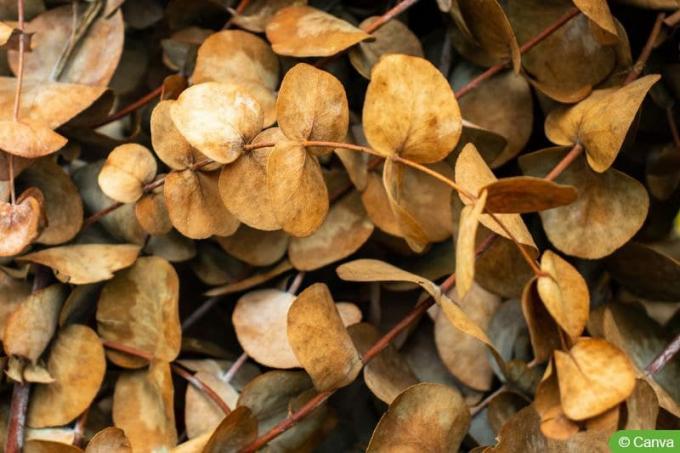
Eucalyptus gets brown/yellow leaves
The eucalyptus is becoming more and more of a trend plant. With its blue-green leaves, the eucalyptus sets beautiful accents. Occasionally, however, foliage discoloration may occur. Everything about the causes and remedial measures below.

Small white dots on leaves: what to do?
When white dots appear on the leaves of crops, take a closer look as they can indicate problems. This text explains what causes can be responsible for this and what you can do about the stains.
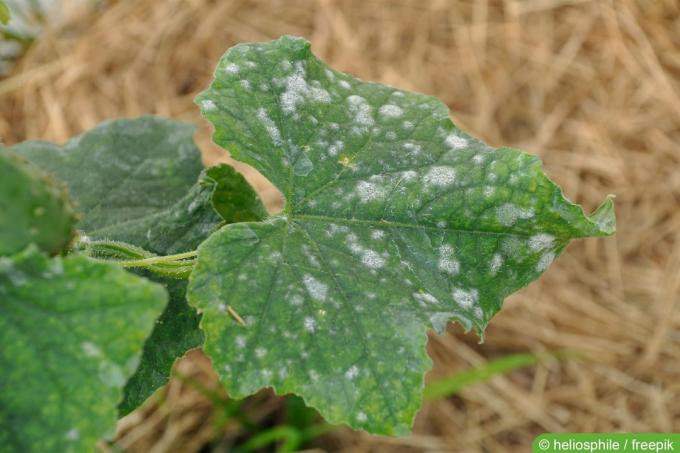
Powdery mildew on cucumbers: how to get rid of it
The powdery mildew often stops by the cucumber bed and quickly conquers the entire plant. That is why every gardener must recognize it early and fight it properly. This is the only way to save the cucumber harvest.

Fighting frizz | 9 home remedies
Peaches from your own garden taste wonderful. More and more hobby gardeners are trying to grow the tasty fruits themselves. The joy is clouded by the appearance of leaf curl in spring. What is this disease? How can you prevent or fight them?
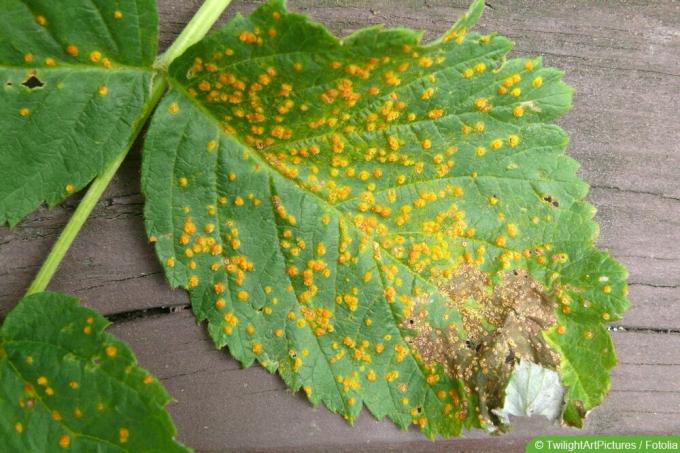
Fighting rust on plants biologically | 5 home remedies
Leaf or plant rust is caused by fungi and can affect ornamental plants as well as crops. Most species of fungi are specialized to a single host or host family and are transmitted by wind. The infestation rate increases significantly with moisture.
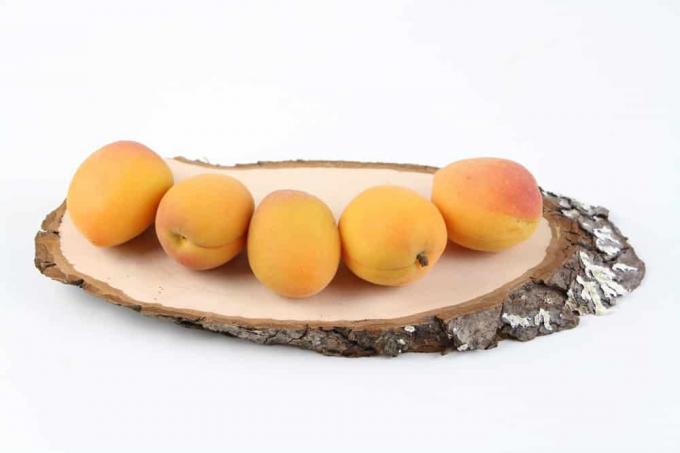
10 typical diseases of the apricot tree and apricot tree
Apricots are one of the most popular fruits in Germany. It becomes difficult to care for an apricot tree in such a way that it is not attacked by a disease. Apricots are known for their susceptibility to diseases and it is therefore important to be able to distinguish between the individual diseases.



